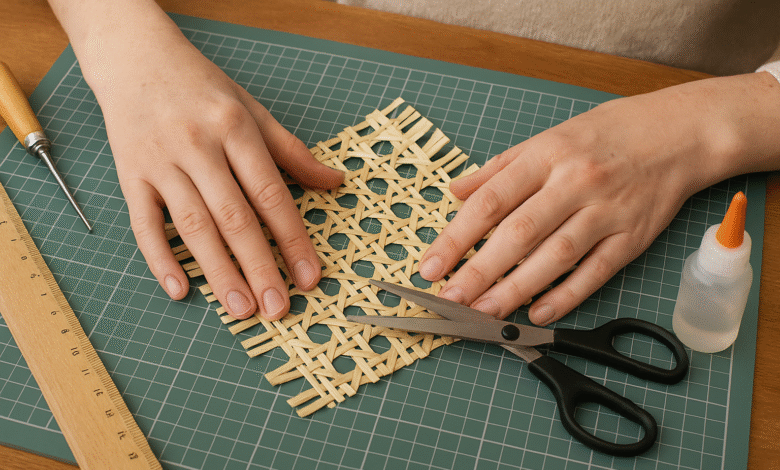Mastering Acamento: A Beginner’s Guide to Tools, Techniques, and Growth

Introduction
Craftsmanship has always held a timeless appeal, especially when it combines beauty and practicality. One such discipline is acamento, a fascinating art form where creativity and detail merge to produce stunning results. For beginners, learning this craft opens the door to both personal expression and functional design. Whether you want to elevate your home décor or embrace a new hobby, understanding acamento provides an opportunity to develop patience, mindfulness, and skill.
This detailed guide explores what acamento is, the tools you need, foundational techniques, common mistakes to avoid, and ways to advance your craft. By the end, you will be well-equipped to begin your journey with confidence and inspiration.
What is Acamento?
Acamento is an artistic practice that blends traditional craftsmanship with modern creativity. It is rooted in detailed assembly and arrangement of materials—such as textiles, wood, or metals—to form decorative and functional pieces. Unlike crafts driven by speed or mass production, acamento is slow, deliberate, and focused on precision.
Each project tells a story through its textures, patterns, and careful details. For many practitioners, acamento is not just a creative outlet but also a meditative process. The slow, thoughtful approach helps cultivate mindfulness, allowing artisans to connect with their materials while producing beautiful outcomes.
Essential Tools for Acamento
To practice acamento effectively, the right tools are essential. Starting with reliable equipment ensures clean results and makes the learning curve easier.
-
Precision scissors – These allow you to cut materials neatly. A comfortable, sharp pair is a must for beginners.
-
Adhesives – Depending on your project, you might use glue, specialty adhesives, or strong tape. Durability matters, so pick carefully.
-
Cutting mat – A cutting mat protects your work surface and provides measurement guidelines for straight, consistent cuts.
-
Measuring tools – Rulers, tape measures, and calipers help you achieve accuracy in every step.
-
A sturdy workspace – A clean, spacious, and well-lit area is necessary to keep you focused and reduce mistakes.
Having these basics ensures you can begin your journey into acamento with efficiency and confidence.
Core Techniques for Beginners
When starting out, it’s vital to practice fundamental techniques before moving to advanced projects. Here are some beginner-friendly approaches:
-
Accurate measurement – Precision is at the heart of acamento. Always double-check your measurements to avoid mismatched parts.
-
Learning knots – Simple knots, like square knots or bowlines, add stability and security to your designs.
-
Material recognition – Different materials behave in unique ways. Understanding their textures, strengths, and limitations ensures better results.
-
Pacing yourself – Acamento rewards patience. Taking your time minimizes errors and helps produce harmonious outcomes.
By mastering these essentials, you will create strong foundations for tackling more complex projects in the future.
Common Mistakes to Avoid
Beginners often face hurdles that can be avoided with careful preparation and awareness. Here are frequent mistakes in acamento:
-
Poor workspace preparation – A cluttered area can cause unnecessary errors and stress.
-
Rushing through measurements – Failing to double-check dimensions often leads to wasted materials.
-
Using substandard tools – Cheap or unsuitable equipment can ruin your progress.
-
Expecting immediate perfection – Acamento requires practice. Instead of fearing mistakes, treat them as lessons that refine your craft.
Avoiding these pitfalls makes the learning process smoother and more enjoyable.
Advanced Acamento Techniques
Once you’re comfortable with the basics, it’s time to expand your skills and creativity with more advanced methods:
-
Layering – Adding layers creates depth and texture, giving your project a professional look.
-
Mixed media – Experiment with combining traditional materials and modern tools to produce innovative designs.
-
Precision detailing – Paying attention to intricate details enhances the beauty and uniqueness of your work.
-
Color blending – Understanding how different colors interact can transform simple projects into eye-catching art.
-
Collaborations and workshops – Engaging with fellow artisans or attending specialized classes can introduce new perspectives and techniques.
These practices not only improve your craftsmanship but also help you discover your unique style within acamento.
Troubleshooting Difficult Projects
Even experienced practitioners encounter challenges. Here are some strategies to help you handle tough acamento tasks:
-
Recheck materials and tools – Missing or faulty supplies often cause unnecessary delays.
-
Fix alignment issues – Use measuring tools to correct small misalignments before they grow into larger problems.
-
Seek outside inspiration – Online tutorials, forums, and craft communities often hold creative solutions.
-
Prioritize lighting – Good lighting reduces mistakes and helps you notice details early.
-
Take breaks – Stepping away when frustrated helps you return with fresh eyes and better judgment.
Troubleshooting effectively allows you to overcome obstacles while maintaining patience and enthusiasm for your project.
The Rewards of Acamento
The journey of learning acamento is as valuable as the final results. It offers several benefits beyond crafting beautiful pieces:
-
Mindfulness – The slow and thoughtful process fosters a calm and meditative state.
-
Creativity – Each project allows you to express your imagination through materials and designs.
-
Skill development – As you progress, your precision, patience, and artistic abilities grow.
-
Personal satisfaction – Completing a piece gives a deep sense of achievement and pride.
Whether you aim to decorate your home or simply enjoy a meaningful hobby, acamento provides endless opportunities for personal growth.
FAQs About Acamento
Q1. What is acamento used for?
Acamento is mainly used in home décor, furnishings, and artistic projects. Its detailed approach allows artisans to create visually appealing and functional designs.
Q2. Can beginners practice acamento without prior experience?
Yes, acamento is beginner-friendly. With basic tools and a willingness to learn, anyone can start and gradually improve their skills.
Q3. How long does it take to master acamento?
Mastery depends on consistency and practice. While basic techniques can be learned quickly, advanced skills take months or even years of dedicated effort.
Q4. What materials are best for starting acamento?
Beginners often use simple textiles, wood, or sturdy paper. As confidence grows, they can experiment with metals, mixed media, and advanced materials.
Q5. Is acamento an expensive hobby?
Not necessarily. While high-quality tools and materials may cost more, starting with essential supplies is affordable. Over time, you can invest in specialized equipment as your passion grows.
Conclusion
Mastering acamento is both a creative and rewarding endeavor. By equipping yourself with the right tools, learning essential techniques, and staying mindful of common mistakes, you build a strong foundation for your craft. As your confidence grows, exploring advanced methods will allow you to produce truly unique and beautiful pieces.
Above all, acamento is about patience, mindfulness, and enjoyment. Each project reflects your style, vision, and dedication. Embrace the process, and you’ll find acamento to be a lifelong journey filled with creativity, growth, and fulfillment.



